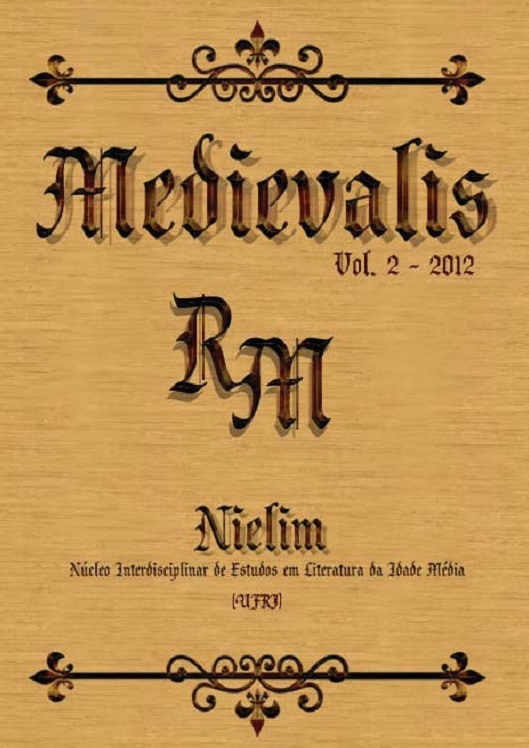A mulher de Bath nos contos da Cantuária: Reflexões sobre o feminino e o controle do corpo no medievo e seus ecos na contemporaneidade
DOI:
https://doi.org/10.55702/medievalis.v1i2.44206Palabras clave:
Chaucer, Feminino, Canterbury Tales, Contos da Cantuária, Sociedade Medieval, Literatura ContemporâneaResumen
Resumo: A Idade Média, erroneamente conhecida como idade das trevas, é um período de grande florescimento das universidades e de uma vasta produção literária, difundida principalmente pelos monges copistas e que faz hoje parte de nosso imaginário. Dentre as obras mais importantes e conhecidas do período podemos citar Beowulf, A Demanda do Santo Graal, Decameron, e aquela que será o foco de nosso estudo: Os Contos de Cantuária, de Geoffrey Chaucer, escrito em fins do século XIV. Tendo em vista que muitas dessas obras literárias vêm sendo recriadas e recontadas através dos séculos, inclusive no século XXI pela televisão e pelo cinema, pretendemos utilizar em nosso trabalho uma das narrativas do livro, o prólogo do Conto da Mulher de Bath. Nosso objetivo será verificar de que forma a vivência da sexualidade explicitada por esta personagem, medieval, pode se contrapor ou equivaler ao comportamento eà questões atuais, do século XXI, ligadas a independência feminina sobre seu corpo e mostrar como este conto é retratado pelas mídias atuais.
Palavras-chave: Inglaterra, Literatura Medieval, Chaucer, Mídia.
Abstract: The Middle Ages, wrongly known as the Dark Ages, is the period that encompasses the blooming of universities and a vast literally production; which was spread through the work of the monks. Among the most known and important Literary works of this period we can list Beowulf, A Demanda do Santo Graal, The Decameron and the one which will be the focus of our article: The Canterbury Tales. Considered as the master piece of Geoffrey Chaucer, the book is composed by one prologue and twenty seven tales, sometimes being compared to Boccaccio’s Decameron. In the prologue of The Canterbury Tales, Chaucer makes a panorama of the peregrines that join him in the journey. These characters are classical representatives from the medieval society; we have characters like the knight, the monk, the pardoner and the merchant, just to name a few. During the presentation of these characters Chaucer inserts his critical view concerning the socioeconomic position of the characters, showing that many times they have inappropriate behaviors according to their position in society. In addition, knowing that many of these literary works have been recreated and retold through the centuries, including on the TV and the cinema
of the twentieth century, we intend to analyze the prologue of The Wife of Bath’s Tale in our article. Our goal through this analysis is to examine how the explicit sexual life presented by this medieval character can differ or be equal to the behavior and to some twentieth century questionings related to the feminine independence over the control of her own body. We also intend to show how this tale is depicted by our the media.
Keywords: Wife of Bath, feminine sexuality, criticism of medieval society, medieval literature nowadays.
Descargas
Los datos de descargas todavía no están disponibles.
Descargas
Publicado
2015-08-17
Número
Sección
Artigos

